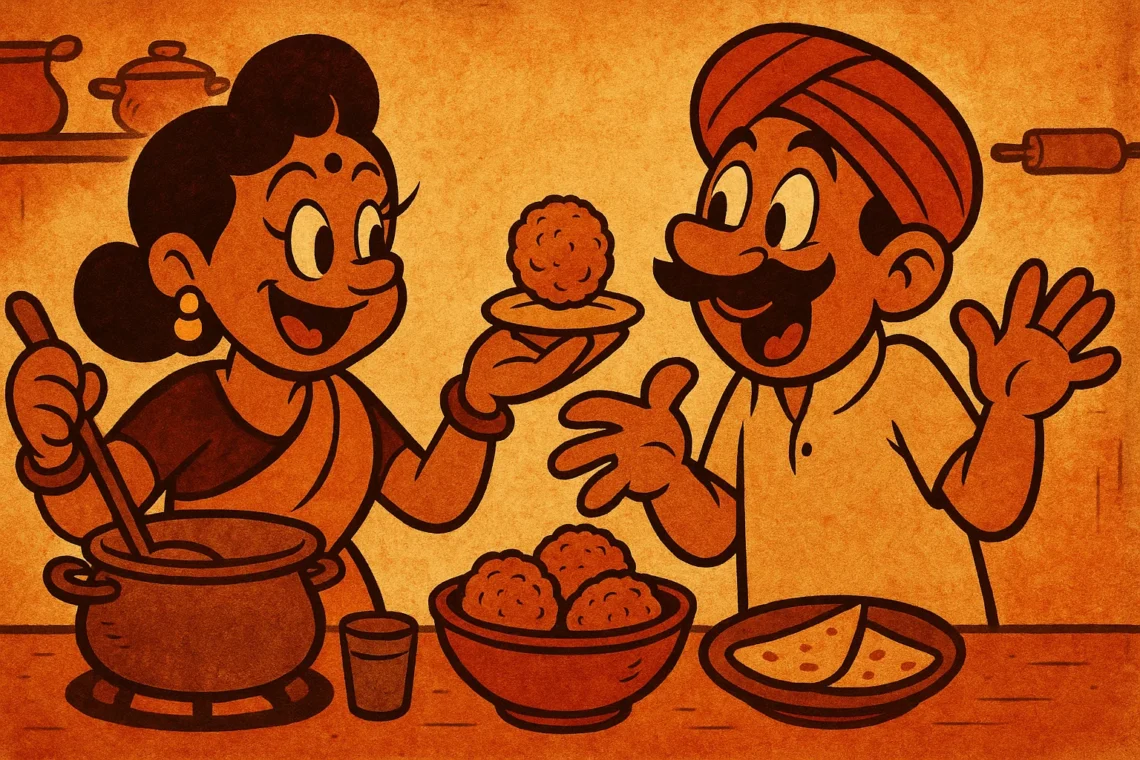We’ve all been there—the fridge door creaks open, and you’re faced with the daunting question: “Is that still good?” The leftovers in question could be anything: a tupperware of dal that’s been sitting untouched for a week, the mysterious half-slice of pizza that survived a late-night binge, or that bowl of curry that *might* have started out as a glorious dish but now seems to have taken on a new, slightly unnerving shade of brown. And there you stand, frozen in front of your fridge, facing a dilemma that’s both practical and deeply philosophical: do you risk eating it or not?
Judging leftovers is an art, one that requires a blend of courage, intuition, and an uncanny ability to decipher vague signs of decay. It’s not just about determining whether something is *technically* still edible—no, this is a field of fridge forensics. You need to rely on all five senses (well, maybe just four), some basic biology, and, in certain cases, pure gut instinct. So, let’s break it down: how do you make the call? Here’s your semi-useful, semi-philosophical guide to judging leftovers, so you can live to tell the tale (and maybe even enjoy it).
Step 1: The Visual Inspection
The first step in evaluating leftovers is simple: take a good, long look at them. This is the no-nonsense step, where you decide whether or not the food has crossed the line from “edible” to “questionable science experiment.”
Here’s the deal: if your leftover has taken on any color that wasn’t part of the original recipe (I’m looking at you, greenish guacamole or brownish rice), proceed with caution. Food *should not* be able to develop new hues of its own without consequences. But, if it’s only slightly altered—maybe the edges are a little crispier than you remember, or the curry has thickened into a paste—don’t panic just yet. These are normal reactions to food settling in your fridge. Still, if your dal looks like it’s trying to grow its own ecosystem, consider saying goodbye.
Also, if there’s a film forming on top, you’ve got yourself a classic leftover conundrum. If it’s a thin layer of fat, it’s fine—more like a protective seal. But if it’s something gelatinous, grey, or… *suspicious*, throw it out. Your fridge is not a petri dish.
Step 2: The Smell Test
If your eyes are still undecided, let your nose be your guide. Humans have a finely tuned sense of smell, which is why it’s one of the best tools for judging whether a leftover will make it or break it. Simply open the container and inhale deeply. But don’t rush this part—take a full, slow whiff to get the complete picture.
If your food smells exactly like it did the night you made it, congratulations—you’re in the clear. A familiar, comforting scent is a good sign. But if your curry now smells like something *else*—the faint hint of something sour, or the vague smell of socks mixed with sour cream—you may have a different situation on your hands.
However, there’s an important rule here: if your leftover smells like death, just don’t. Trust your nose. You don’t need to be a culinary expert to know that if something smells off, it’s *definitely* off.
Step 3: The Texture Test
Now, assuming your food hasn’t immediately failed the first two steps, it’s time to dive into the texture. This is where things get a little more nuanced. Take a small bite or a spoonful and assess. If the food feels slimy or has developed an unpleasant mushy consistency, you’re in dangerous territory. A perfectly cooked vegetable curry might have softened a bit overnight, but it shouldn’t feel like it’s disintegrating into nothing.
Remember, some foods, like rice or noodles, are naturally prone to getting clumpy or dried out when stored. A little dryness can often be rescued with a splash of water or a quick reheat in the microwave. But if your food now feels like a squishy sponge—especially if it’s lost all its original texture and has started looking like it’s congealed into an unidentifiable mass—it’s a red flag. At that point, you’re probably looking at a mystery meal that’s about to reveal its true, unsavory identity.
Step 4: The Taste Test (If You Dare)
Here’s where the true spirit of adventure lies. If your leftover has passed the visual inspection, the smell test, and even survived a brief textural analysis, you’re almost there. It’s time to take the final plunge: the taste test. Small spoonful, no big commitments. If it tastes like it’s supposed to, congratulations—you’ve unlocked a leftover victory. You’ve navigated the labyrinth of fridge forensics and lived to tell the tale.
But if that bite is followed by an immediate *oh no*, it’s time to say goodbye to that meal. A sour or off taste will immediately tell you that your leftover has gone beyond its prime. Trust me, you don’t want to end up spending the rest of the day regretting that extra bite of something you thought was “still good.”
Step 5: The Final Verdict – When to Let Go
There are times when you simply know in your heart (and your gut) that a leftover has lived its last day. Letting go of food can be hard, especially when you spent time and effort preparing it. But remember: food is not meant to be a memory that haunts your fridge. If you’ve reached the end of the line—if the smell, texture, and taste are no longer in alignment—just throw it away. It’s not worth the risk of eating something that’s not right for you.
Ultimately, leftovers are an emotional journey. Sometimes, they bring comfort and nostalgia; other times, they serve as an opportunity for growth. Or at least, growth in the form of not making the same fridge-forensics mistakes next time. When in doubt, remember: there’s always another meal to make, and sometimes, it’s best to let go.
Leftovers, and the Art of Knowing When to Say Goodbye
At the end of the day, judging leftovers isn’t just about the science of smell, texture, and taste. It’s about listening to your gut (literally). You know when something’s not right, and you also know when something’s worth saving. So the next time you stand in front of your fridge, wondering “Is that still good?” remember to use all your senses, trust your instincts, and when in doubt, just let it go. Your stomach—and your future self—will thank you.
Born in Mumbai, now stir-frying feelings in Texas. Writes about food, memory, and the messy magic in between — mostly to stay hungry, sometimes just to stay sane.












